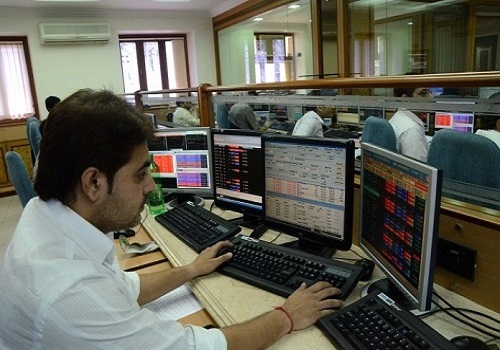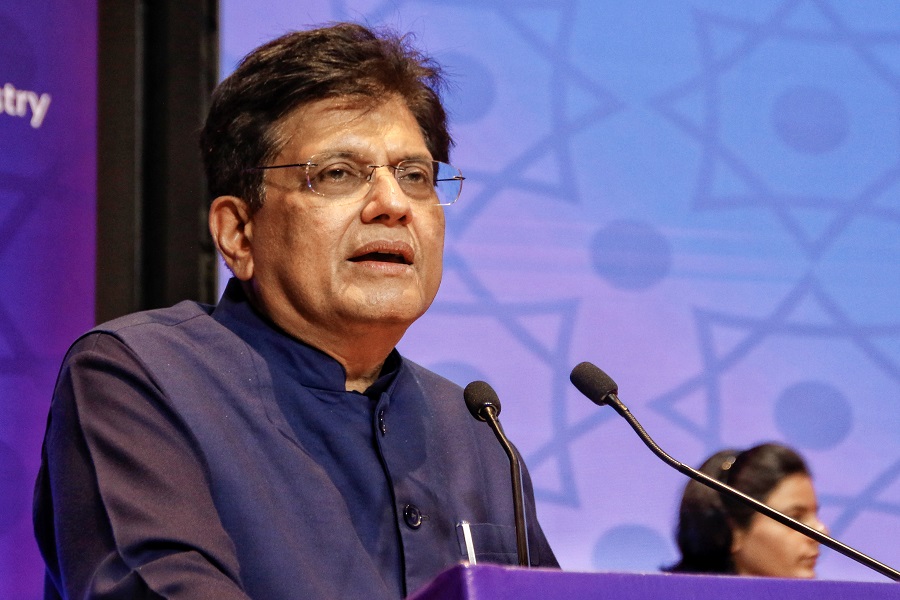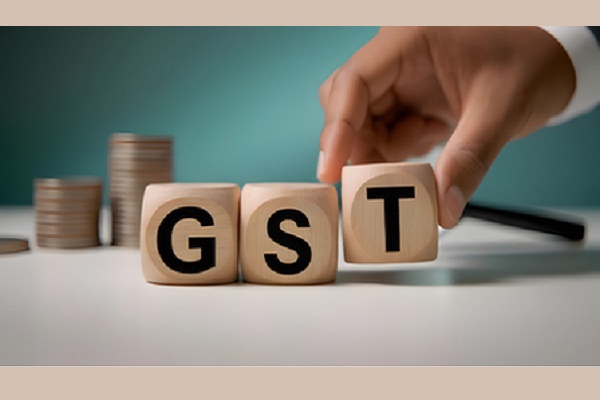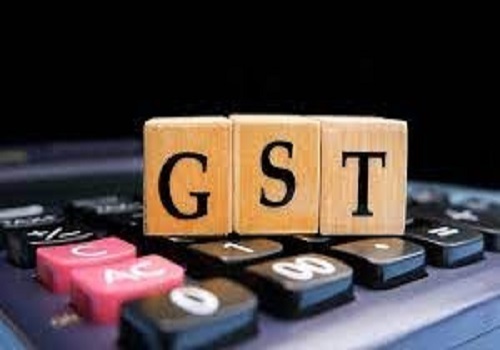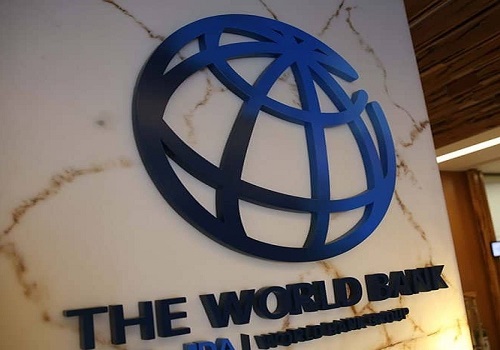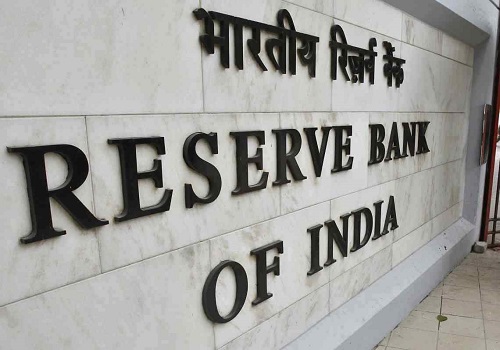Strategy: Complacency and optimism amid confusion by Kotak Institutional Equities

The recent rebound in the market reflects some degree of complacency and optimism in the market with respect to global growth and domestic earnings. In our view, there is (1) still large uncertainty on key issues (global growth, tariff/trade, US dollar) that will shape global and domestic markets and (2) optimism on earnings in the market.
Recent rebound in the market—complacency and optimism amid confusion
We attribute the recent rebound in the market (see Exhibits 1-2) to some degree of complacency in the market. The fact that the market is trading above “Liberation Day” levels would suggest that all issues have been fixed. In reality, (1) global and domestic GDP growth will be likely lower, (2) the reciprocal tariff and trade issues will take a long time to resolve, (3) earnings have been cut further and (4) multiples continue to be rich across sectors and companies (see Exhibits 3-8); even large-cap. financials are reaching fair valuations.
New economic world order—most countries and companies will be likely losers
We hope that there are no major accidents as the world transitions from the post-WWII economic order to a new, unknown one. The last 30 years have been about a symbiotic relationship between ‘excessive’ savings of Asia and Europe funding ‘excessive’ consumption in the US, leading to a persistent large CAD of the US, large capital inflows into the US and a ‘strong’ US dollar. The base-case scenario is lower GDP growth for a couple of years to start with (see Exhibits 9-10). We see more complex and potentially destabilizing issues—(1) the role of the US in the global financial system, (2) the faith of non-US investors in US assets; non-US investors are large holders of US assets, (3) the role of the US dollar and (4) the behavior of countries and companies in the new economic order.
Tariff and trade issues are far from being resolved
We doubt that trade agreements can be negotiated between various countries (including India) and the US over the remaining 75 days, before the 90-day period from April 9 expires. For now, most countries are on an equal footing on tariffs on their exports to the US, and there is no clarity on the final tariff levels and related issues (non-tariff barriers). We note that the US has (1) already imposed a 10% reciprocal tariff on all imports (higher on China and certain products, with exemptions on some others) and (2) postponed the higher reciprocal tariffs (see Exhibit 11) for 90 days from April 9.
Earnings continue to grind down
We have seen further earnings cuts (see Exhibit 12) in the ongoing 4QFY25 results season, with (1) IT services and (2) oil, gas and consumable fuels sectors contributing to the bulk of the earnings downgrades. Consensus earnings estimates for FY2026E and FY2027E have seen downgrades in a few sectors and companies (see Exhibits 13-14). We assume there will be more, as global and domestic growth slowdowns hit revenues. For now, we model 12% growth in the net profits of the Nifty-50 Index for FY2026E (see Exhibits 15-16).
India and US trade issues
There seems to be a fair degree of belief and hope that India will be a relative beneficiary of tariffs and trade whenever the US is in a position to complete its tariff and trade arrangements with various countries. We make a few observations on this matter.
4 Tariffs. In our view, the level of final reciprocal tariffs for India (10%, 26% or any other in-between figure, as the case may be) may be a lesser issue versus non-tariff issues and India’s trade surplus with the US can decline over time, if not immediately. The Street generally believes that India will be in a decent position to reduce its trade surplus with the US (see Exhibit 17 for details) by committing to increasing imports of certain items from the US (defense, energy being the most obvious ones).
¢ Defense imports from the US. We would caution that defense systems take a long time to finalize since they need to fit in with the overall defense strategy of a country. India has followed a certain strategy for its military hardware, and it may not be easy to integrate completely new and different systems with the extant systems.
¢ Energy imports from the US. India imports the bulk of its crude oil and gas requirements (see Exhibits 18-19 for a breakdown of India’s oil and gas imports by countries) and it can theoretically increase its imports from the US. However, we would note that other large trade-surplus countries with the US will pursue a similar strategy. Europe, Japan, South Korea and Taiwan are all energy-deficit countries and will try and rebalance their trade surpluses with the US through more energy imports. The US may have its own challenges in increasing crude oil and gas production, given the current oil and gas price levels. Shale oil and gas producers will struggle to make decent profits at current prices and will be reluctant to increase production. Lastly, the US does not have that much spare LNG export capacity (see Exhibit 20 for capacity utilization at various LNG terminals) although it is expanding LNG export capacity aggressively (see Exhibit 21). It has increased supplies to Europe in the past few years, with Europe reducing its imports from Russia after the Russia-Ukraine war.
4 Non-tariff issues. In our view, this may be a bigger obstacle to a quick trade deal, especially if the US were to insist on certain potentially difficult-to-meet obligations for India. Based on media articles, the US is keen for India to allow (1) greater access to US companies in financial payments and retailing and (2) higher agriculture imports. We believe it would be difficult for India to (1) allow unrestricted access of agriculture imports and (2) permit retailing by FDI entities without any restrictions, from a political perspective.
* Agriculture. It is extremely unlikely that India will allow unfettered imports of agriculture items, given the political fallout of such a move. India has about half of its workforce in agriculture. India currently has either (1) a complete ban on imports of several agricultural items or (2) high tariffs (see Exhibit 22). We note that India’s agricultural produce prices are higher than global prices in several cases.
* Retailing. It is unlikely that India will allow full freedom to foreign companies in retailing, given the political and social issues around FDI retailing, affecting the livelihoods of around 20 mn small retail outlets. India has allowed FDI in retailing with certain restrictions (see Exhibit 23). In particular, the current regulations permit 100% FDI in a marketplace model of e-commerce but do not permit FDI in the inventory-based model of e-commerce. The US is reportedly pushing for a level playing field between foreign and Indian entities in e-commerce. Of course, it is another matter that the same neighborhood retail outlets face aggressive competition from domestic modern retailing, e-commerce and quick-commerce companies.
US assets and US dollar
This is a fairly complex issue and will likely have deep and long-term implications for countries in case the US dollar was to continue to depreciate over time, led by (1) lower faith of non-US investors in US dollar assets due to constant changes in economic policies, (2) increased focus among non-US investors on the ‘unsustainable’ debt levels of the US due to continued high public debt, CAD and GFD (see Exhibit 24 for data over time) and (3) lower capital inflows into the US on the back of lower trade deficits of the US.
Non-US investors had been willing to own increasing amounts of US financial assets (see Exhibit 25 for data over time) due to their confidence in the US economy, US dollar assets and the US dollar. This confidence extended to US debt also, despite a continued deterioration in the financial condition of the US, which the current administration seems keen to correct. In other words, both the borrower and creditors were willing to overlook the worsening financial position of the US (evergreening of the Greenback, if you will), given the faith in the US economy and reserve currency status of the US dollar.
4 US assets and capital flows. In our view, lower confidence among non-US investors due to (1) frequent changes in the policies of the US administration (if this continues) and (2) disregard for institutions may result in non-US investors seeking a higher yield (lower prices) to offset the enhanced risks associated with US assets. US bond yields and stock prices gyrated wildly (see Exhibit 26) on increased investor concerns about the economic policies of the US in the days following the announcement of the reciprocal tariffs. Markets have calmed down recently following positive commentary and rollback/suspension of tariffs from the US administration.
In the past, low investor concerns around the economic policies of the US and limited currency-related risks associated with the US dollar made capital investments attractive for non-US investors, to the extent that US bonds were treated as risk-free assets. The US’s large capital market could absorb large amounts of capital quite easily, making it quite easy for foreigners to invest large amounts of capital. It remains to be seen if incremental investments by export-surplus countries would continue at the same pace as in the past or seek other investment opportunities, including EMs. Of course, lower trade surpluses and higher consumption in the trade-surplus countries would partly offset the issue of ‘excessive’ savings of the trade-surplus countries and related capital flows into the US.
4 Capital and trade flows linked to US dollar A sharp and prolonged period of depreciation in the USD versus other countries will lead to adjustments in global capital and trade flows. Export-surplus countries would have to contend with lower net exports and find ways to boost domestic consumption in case the US were to see lower trade deficits on weaker US consumption demand and the US dollar were to depreciate meaningfully against other currencies. In addition, a weak and depreciating US dollar will (1) dent the balance sheets of the creditor countries, (2) reduce the returns of equity investors in their local currencies and (3) reduce the attractiveness of US assets (both bonds and equities).
Earnings
We believe that the Street is probably being too optimistic in its earnings estimates. We see two areas of differences versus our more nuanced stance—(1) the Street may be too bullish on revenues of export-oriented sectors such as automobiles, IT services and potentially pharmaceuticals and specialty chemicals in light of high levels of uncertainty on global GDP growth and tariffs in the US and (2) the Street may be too optimistic on profitability of consumption companies by assuming that the companies will be able to retain the benefits of lower raw material prices.
4 Revenues. In our view, the Street may be too optimistic on its revenue growth assumptions of the export-oriented sectors. We believe (1) high tariffs in the case of automobiles will adversely affect the revenues of automobile companies such as BHFC, TTMT, among others; very few Indian companies have operations in the US and they will be at a severe disadvantage versus automobile companies with manufacturing facilities in the US in case the US was to continue with the current tariffs on automobiles and components and (2) delayed decision-making of the clients of IT services companies may affect the revenues of the IT services companies. We have moderated FY2026E and FY2027E revenues for the IT services companies (see Exhibits 27-28) but we note risks of large possible variance (positive or negative) versus our estimates. More importantly, we would note that valuations of the IT stocks are well ahead of pre-pandemic levels, when growth rates were meaningfully higher. They certainly do not factor in a deep slowdown or recession in the US. A deep slowdown or a recession in the US will affect both revenues and profitability negatively.
4 Profitability. We believe the Street may be too optimistic on its profitability assumptions of the domestic consumption-oriented sectors. The Street is banking on companies being able to retain a meaningful portion of the assumed decline in raw material prices. Even assuming prices of agricultural products were to decline along the expected lines of the Street and prices of crude oil and related inputs were to stay at current low levels, it remains to be seen if the companies can retain the benefits of lower raw material prices.
As we have argued in the past, the market structure across categories has changed adversely with more competition across categories and subcategories of products. In our view, the ability of the entire industry to retain the benefits of lower raw material prices is far lower than in the past when the industry structure was a lot more favorable.. A company or a few companies may choose a different strategy of reducing product prices to increase its/their market share. This may negate the benefit of lower raw material prices for all companies in the sector unless a company was willing to lose volumes to other players and market share in its quest for higher profitability. As an example, in its 4QFY25 results commentary, HUVR management highlighted that it expects gross margins to moderate in FY2025, as it will “continue to deliver the right price-value proposition.” It reduced its EBITDA margin guidance to 22-23% from 23-24% earlier. It seems to be keener on volume growth than on profitability in the near term.
Model portfolio changes
Exhibit 29 is our revised recommended large-cap. portfolio. We remove GCPL (190 bps earlier) from the model portfolio, given (1) the stock’s strong performance over the past few weeks and (2) the stock is trading around our 12-month forward Fair Value of Rs1,250. We remove HCLT (130 bps) from the model portfolio given the stock’s full valuations (23.8X FY2026E EPS) and high risks to earnings in a tough-to-predict demand environment. We reduce LT by 100 bps to 170 bps, noting increasing risks to earnings and weight on Macrotech (LODHA) by 100 bps to 150 bps, noting the stock’s stellar rise in the past few weeks (17% up from April 9).
We add Canara Bank (CBK) with a weight of 150 bps and TECHM with a weight of 150 bps. CBK is trading at 0.9X 1-year forward P/B and does not seem to be seeing any major credit quality challenges. We like TECHM’s turnaround story and see the company benefiting from self-help measures and a decent order book, even as the demand environment will likely remain tough.. We increase the weight on RIL (150 bps to 850 bps). We allocate the balance to ICICIBC (20 bps to 10% weight) and INFO (50 bps to 550 bps).
We are struggling to find replacement ideas for stocks in our model portfolio and are thus leaving some of our ‘old’ favorites in the portfolio despite a few stocks trading at fair valuations. We continue to have a large position in financials (around 45%), healthcare services & pharmaceuticals (about 14%), which is a huge overweight) and telecommunications (including RIL). These sectors have done well in the past few months, which has reduced the reward-risk balance for the sectors. We see larger risks of earnings downgrades and de-rating of multiples in the consumption, investment and outsourcing (IT services) sectors. The multiples of most stocks make limited sense in the context of (1) the low earnings growth being delivered by the companies in the near term and (2) the high and growing risks of disruption to their business models in the medium term.
Above views are of the author and not of the website kindly read disclaimer


